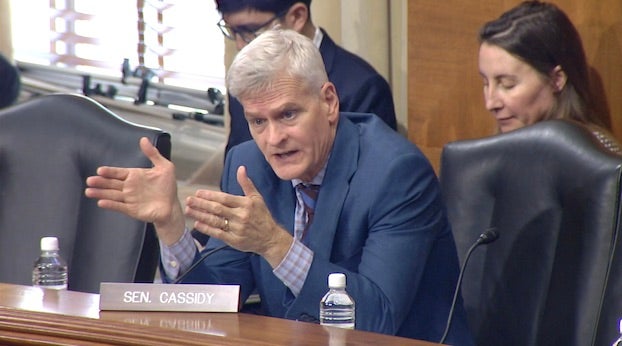Three routes proposed for LC bypass in 1958
Published 3:29 pm Wednesday, August 30, 2017
<p class="indent">A reader recently asked The Informer about the Interstate 210 bypass and whether officials ever considered making it a bona fide loop. The column last addressed the question in 2015, when it printed the following:
<p class="indent"><strong class="tag TTL">In planning the Interstate 210 bypass, was there ever a question on if they were going to go on the north side of Interstate 10 — have a loop over there, one big continuous loop?</strong>
<p class="indent">No.
Trending
<p class="indent">Highway officials mapped three possibilities for the bypass — two to the south, one to the north — but they only ever gave serious consideration to the route they eventually built. And they never planned to build a loop around the city.
<p class="indent">“The College street route, plus a suggested route north of the city, was submitted to the city council and police jury about a year ago but both bodies objected to the College street proposal and an alternate south route was explored by highway engineers,” reads an <span>American Press</span> story printed July 6, 1958.
<p class="indent">“Details of all three routes were publicly disclosed this past week with distribution of copies of the report made by Howard, Needles, Tammen and Bergendoff, engineers of Kansas City and New York, who made the studies under contract to the state highway department.”
<p class="indent">The story says the state’s highway director, R.B. Richardson, had cited low traffic projections in discounting any prospect of using the northern route, which wouldn’t have ventured as far north as Moss Bluff in bypassing the city.
<p class="indent">“The north route would branch off from the interstate route a half-mile east of Maplewood and turn northeast, crossing U.S. Highway 90, and then swing due east just north of the Westwood subdivision near West Lake,” reads the story.
<p class="indent">“It would proceed east across the Calcasieu river and cross North Goos boulevard in the vicinity of Theriot street. It would cross U.S. Highway 171 at Hagan street, continue over Kayouche Coulee, and pass just to the north of Kayouche Coulee golf course before swinging south to join the interstate highway about two miles east of the Eastwood elementary school.”
Trending
<p class="indent">The south route, referred to above as the College Street route, was the favorite of state and federal highway officials, who believed it would see more use than either the north route or the alternate route, which would’ve run south of University Place.
<p class="indent">“The average number of vehicles using the Calcasieu river bridge now is 24,000 per day. By 1975 it has been estimated that 66,670 vehicles will be crossing the river daily. If the north route were built, it is estimated that only 10,500 vehicles a day would use the bridge on that route, leaving the present bridge to carry 56,170 vehicles, far beyond its capacity,” reads the story.
<p class="indent">“If the College street route is selected the bridge across Indian Bay would carry an estimated 24,450 vehicles daily, reducing the load on the present bridge to 42,220 daily.
<p class="indent">“Engineers estimate that if the alternate south route were built — with the river crossing at the same place as the College street route — only 13,980 vehicles would use the bridge daily, leaving 52,690 for the present bridge to carry.”
<p class="indent">The northern route measured 11.2 miles; the southern route, along College Street, measured 12.5 miles; and the alternate route measured 21.5 miles. The cost of the first was estimated at $24.5 million; the cost of the second at $45.6 million; and the cost of the third at $41 million.
<p class="indent">The bypass, built along the College Street route, opened in 1977. The I-210 bridge was finished more than a decade beforehand, in 1964.
<p class="indent">l
The Informer answers questions from readers each Sunday, Monday and Wednesday. It is researched and written by <span>Andrew Perzo</span>, an <span>American Press</span> staff writer. To ask a question, call 494-4098 and leave voice mail, or email <span class="text_link link_wrap type_eml" data-link-target="informer@americanpress.com" data-link-type="EML">informer@americanpress.com</span>.





